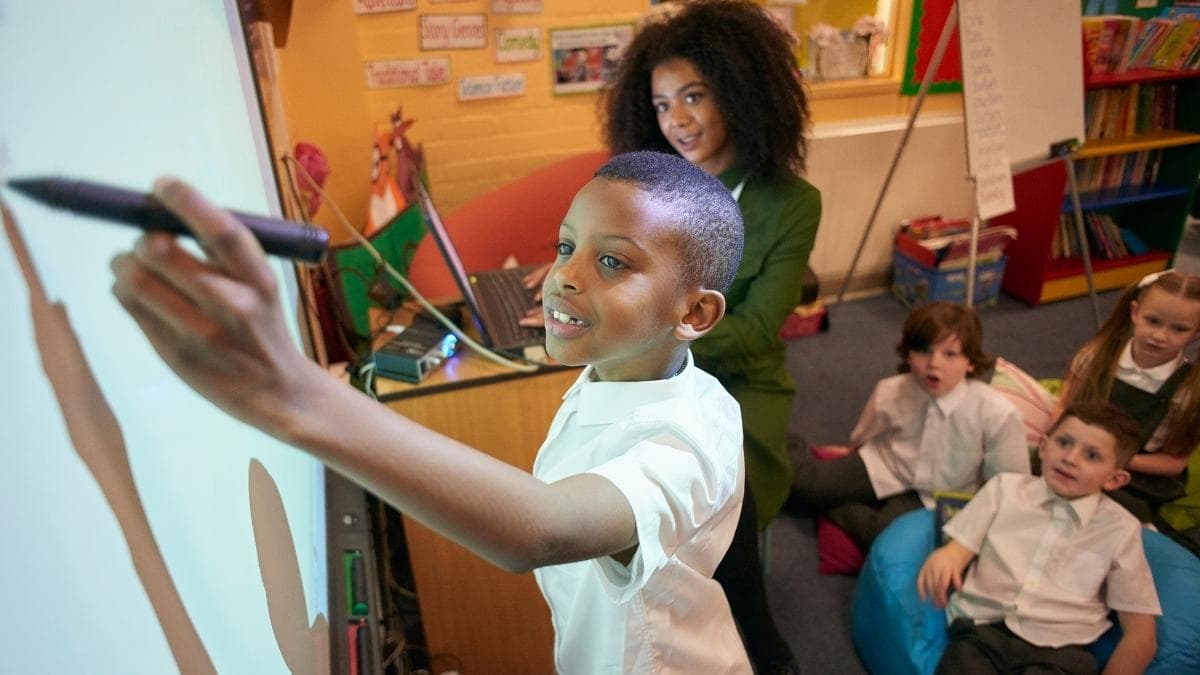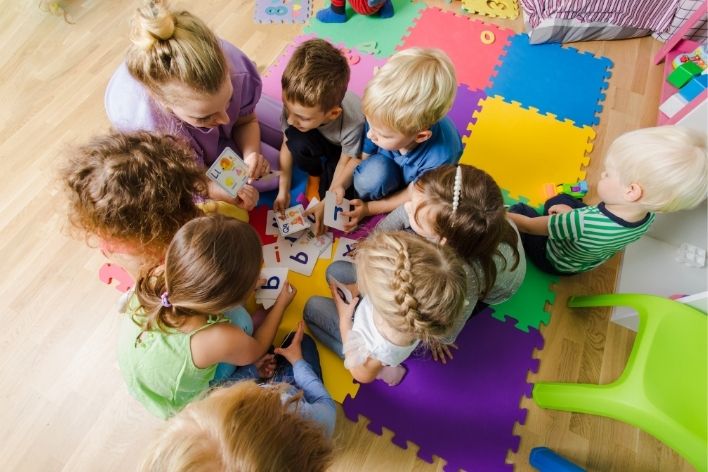How to Make Learning Fun: Engaging Kids in Educational Activities

Learning can't be so boring, but really, it's the best when fun is involved. Imagine doing math while playing games, science while experimenting, and history while engaging in interactive stories. You get to understand concepts better, remember for a longer period, and enjoy it. The key is to find the thing that makes learning fun and use that as a tool to transform every lesson into an exciting adventure. In this blog, we'll delve into different educational activities for kids and educational activities for students that make learning fun and engaging.
Have you ever tried to make something "look forward to" every day? Sometimes, some educational activities for kids are quite boring to the parents. But really, it's up to the parents to make it exciting for their children. Here's how.
Why Learn with Fun?
Let's go to the actual fun learning activities first but just discuss why it's important to learn with fun. When kids are enjoying while learning, they become curious and eager to explore new things around them. This process makes it easier to focus and absorb information.
Benefits of Learning with Fun
Better Retention: In most cases, if a person is enjoying himself or herself, they are likely to remember what he or she had learned. Therefore, when I understand animals through enjoying a game or maybe taking them through an exercise with animals, then I am likely to recall those facts later.
Promotes Creativity: Actually, the connection of learning to fun is sure to make kids think outside their box. They will come up with various new ideas, questioning themselves as they begin to seek creative solutions.
Build Confidence: Engaging learning activities usually involve problem-solving and overcoming obstacles. Every time they succeed, the confidence level goes up.
Raises Motivation: A worksheet would appear as a mountain to climb. But a game, an experiment, or a story? Now, that's something kids would want to get involved in!
Fun Educational Activities for Kids
Let's now move on to how to make it interesting by getting ourselves familiar with some fun educational activities for kids.
Here are some wonderful ways to learn with fun using activities designed to keep kids entertained and engaged.
1. Learning through games
Games are one of the best education-oriented activities for kids. It's like playtime, and they learn while playing!
Math Bingo. Take a bingo card to practice math problems and place the answers to math problems in the spaces on the bingo card. For example, if 7 is on your bingo card-it's as easy as solving the math problem and marking off the number.
Spelling Scramble. Write letters on pieces of paper, then scramble them. Let kids form words out of the letters. It's fun to practice spelling and vocabulary without losing the interaction.
These games will easily turn into excellent educational activities during learning in groups.
2. Hands-On Science Experiments
Science becomes a lot cooler when you get to do interesting experiments! These fun experiments and learning activities urge kids to ask questions of the world around them.
Volcano Eruption: Your kids can build small volcanoes from clay or sand. Then they add some baking soda, food coloring, and vinegar for an eruption! The kids will have fun, but they'll learn about chemical reactions!.
Floating Egg: Fill a glass with water and put an egg in it-it sinks. Now, add salt to the water, and the egg begins to float! It is a great experiment to teach kids about density and buoyancy.
Science experiments are a great way of learning with fun while you explore key scientific concepts.
3. Art as a learning tool
Drawings, paintings, and crafts can be great learning tools, too. These work well, especially in teaching history or even social studies.
History with Art Storytelling: The children can simply draw scenes from history, or they can make crafts from another timeline. For example, once the topic is ancient Egypt, then they are to make paper pyramids or draw pharaohs.
Geography Maps: Ask them to draw the maps of the world or even to design three-dimensional models of various continents. Learning about geography would be very enjoyable while at the same time making it a creative task.
You combine creativity and lessons. This way, lessons become more engaging and memorable.
4. Interactive Reading
Reading can be a dynamic, interactive activity if taken the correct way. Instead of just reading a book, you can make it come alive!
Action Stories: Once the children listen to a story, it's now time for them to enact the scenes coming from the book. It's so much fun while including reading and also improving the child's understanding.
Make-Up Ending: Let the children develop their own alternate ending to the story. This sparks imagination and helps children think more deeply about what they heard.
Reading stories is a basic activity included in the activities that a child performs at school because it develops linguistic competence and understanding.
5. Outdoor Learning Adventures
The best classroom is sometimes outside! There are so many ways to learn with fun outdoors.
Natural Scavenger Hunt. Write up a list of things that they are to find in nature: a leaf, a rock, a flower, etc. As they collect each item, teach them a fact about it. Such as finding a leaf and learning about photosynthesis.
Outdoor Science Lab: Turn the outdoors into a giant science lab. Kids can learn about bugs, plant seeds, or even measure the wind speed. It's a great way to marry science with outdoor exploration.
Learning outdoors is exciting because it involves kids with their environment.
6. Learning Through Music and Movement
Learning through music and physical activity can make even the most boring lesson fun!
Math Dance Party: Play some music and get the kids dancing. Stop the music and scream out a math problem. Freeze and solve the problem before the music restarts again. It's an enjoyable way of getting them moving and sharpening their math skills.
Language Songs: Develop songs that assist a child in retaining difficult vocabulary or tricky grammar rules. Through the rhythm and melody, he will easily be reminded of those things.
Using music and movement in the educational activities of students is a great source of challenge and engagement for their bodies and minds.

What makes learning fun?
Keeping things exciting, interactive, and varied. Here's a quick list of elements that add fun to learning:
Games and Challenges: Make lessons games or challenges to encourage kids participation enthusiastically.
Hands-On Learning: Kids love to touch, build, and test things. Hands-on activities like crafting and experiments keep their curiosities at their heights.
Creativity: Making a child feel creative is the biggest fun learned. Drawing, building, or storytelling is creative enough while learning.
Movement: They never like sitting idle for long. Dancing, acting, or any other outdoor activity adds movement to learning but makes it fun, and lively
Interactive Learning: Interactivity through discussion, role-playing, and problem-solving encourages participation and makes learning less burdensome.
How to Have Fun Learning Outside Home?
But it can also be achieved back home. Here are some tips on how to make learning fun outside the classroom:
Usage of Learning Apps: Tons of apps will make it so much fun to learn. For example, math apps where solving an equation becomes a game, or spelling apps that will challenge your little one.
Cook and Math: Get the kids cooking and measuring the ingredients, but remember "cooking equals math-plus fractions!"
Home Science Lab: You don't have to go to an elaborate lab to do some science experimentation in your home. You can make slime, grow crystals, or study how plants grow. Such a set of activities only requires simple materials.
Family Game Night: Make learning a fun family activity. These activities are ways to play educational board games. Games like Scrabble or Monopoly go a long way in building vocabulary and math skills in your child.
These activities indicate that you can easily combine any of your daily activities with educational activities for your children.
Ways to Make Learning Fun for Different Age Groups
Different ages have different approaches that will make learning fun. Let's look at some ways to make learning fun for different ages.
For Preschoolers (Ages 3-5): Building blocks, shape-sorting games, and simple puzzles.
For Elementary Kids (Ages 6-10): Problem-solving games, scavenger hunts outdoors, science experiments.
Promote middle school students, aged 11-13, to engage in group projects, writing, and computer-based educational games.
Different age groups have different learning characteristics. Therefore, the enjoyment of the teaching activity will be enhanced if the curriculum is restructured in light of the age group of the students.
Conclusion
It doesn't have to be learning for kids. If you want to learn with fun, every subject turns into some exciting adventure you are going to explore. Be it through games, outdoor activities, hands-on experiments, or innovative arts; there are unlimited ways that make learning a fun and engaging process.
So, here are some ideas for parents and teachers to try out, and watch as kids grow more eager and motivated to learn. With the right approach, you can transform education into a journey of discovery filled with laughter and joy!
By using fun educational activities for kids, and understanding what makes learning fun, you can ensure that every child is excited to learn something new each day!
FAQs :
Why do we need a fun activity?
Also, having fun has positive biological effects. When we do pleasurable activities, it releases dopamine which leads to positivity and can counteract more uncomfortable feelings of hopelessness and stress. Finally, having fun allows us the opportunity to connect and create bonds with others.
Why is it good to have fun while learning?
Learning becomes more engaging and effective when it is infused with an element of fun. This is because fun piques our curiosity and motivates us to explore further. It makes the process of acquiring knowledge exciting, rather than just a mundane task. Fun is not limited to any particular age group.
Does enjoyment improve learning?
There are many works discussing the influence of emotions on learning, and of course, some of them prove that enjoyment and happiness have a positive effect on learning, memory, and social behavior
We hope you liked the above article. Please do not forget to share this blog with your friends and community members to spread awareness of "How to Make Learning Fun?”
Related Blogs
The Importance of Play: Learn about The Importance of Play in Child's Development through our blog.
Developing Critical Reading & Writing Skills: Get more information about developing reading and writing skills through our latest article.
Other Related Sections
NCERT Solutions | Sample Papers | CBSE SYLLABUS| Calculators | Converters | Stories For Kids | Poems for kids| Learning Concepts I Practice Worksheets I Formulas | Blogs
Admissions Open for
CBSE Schools In Popular Cities
- CBSE Schools in Bangalore
- CBSE Schools in Mumbai
- CBSE Schools in Pune
- CBSE Schools in Hyderabad
- CBSE Schools in Chennai
- CBSE Schools in Gurgaon
- CBSE Schools in Kolkata
- CBSE Schools in Indore
- CBSE Schools in Sonipat
- CBSE Schools in Delhi
- CBSE Schools in Rohtak
- CBSE Schools in Bhopal
- CBSE Schools in Aurangabad
- CBSE Schools in Jabalpur
- CBSE Schools in Jaipur
- CBSE Schools in Jodhpur
- CBSE Schools in Nagpur
- CBSE Schools in Ahmednagar
- CBSE School In Tumkur











